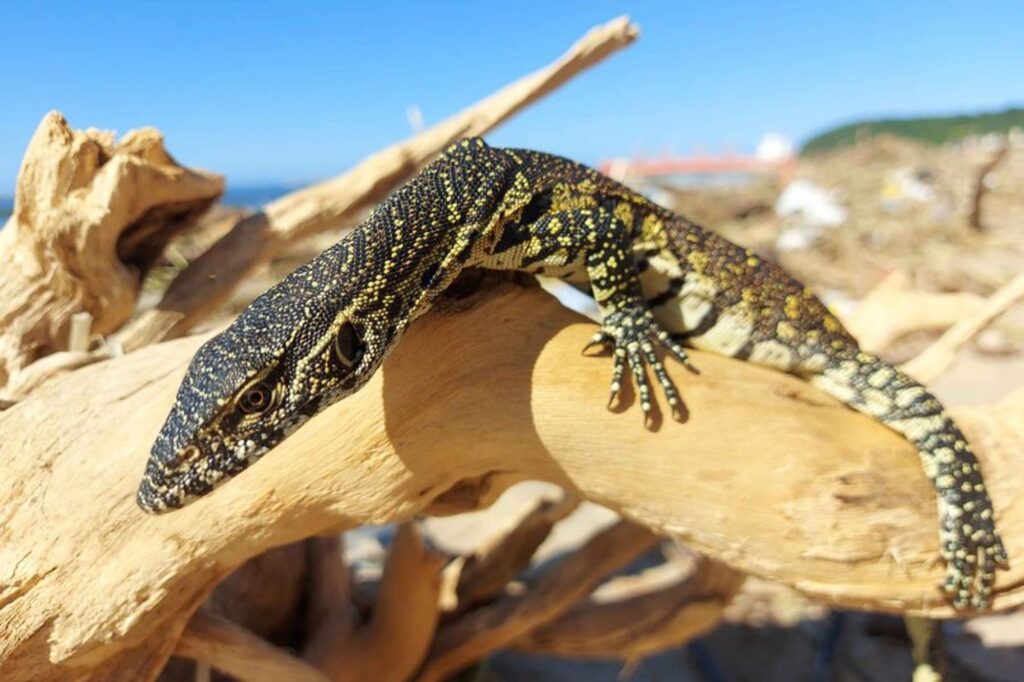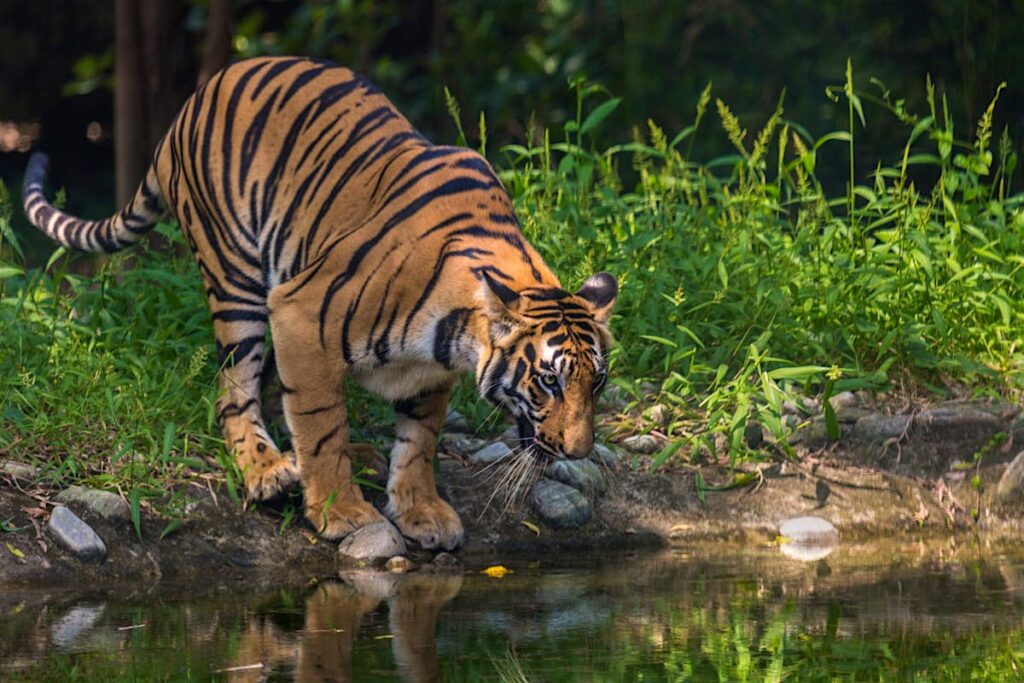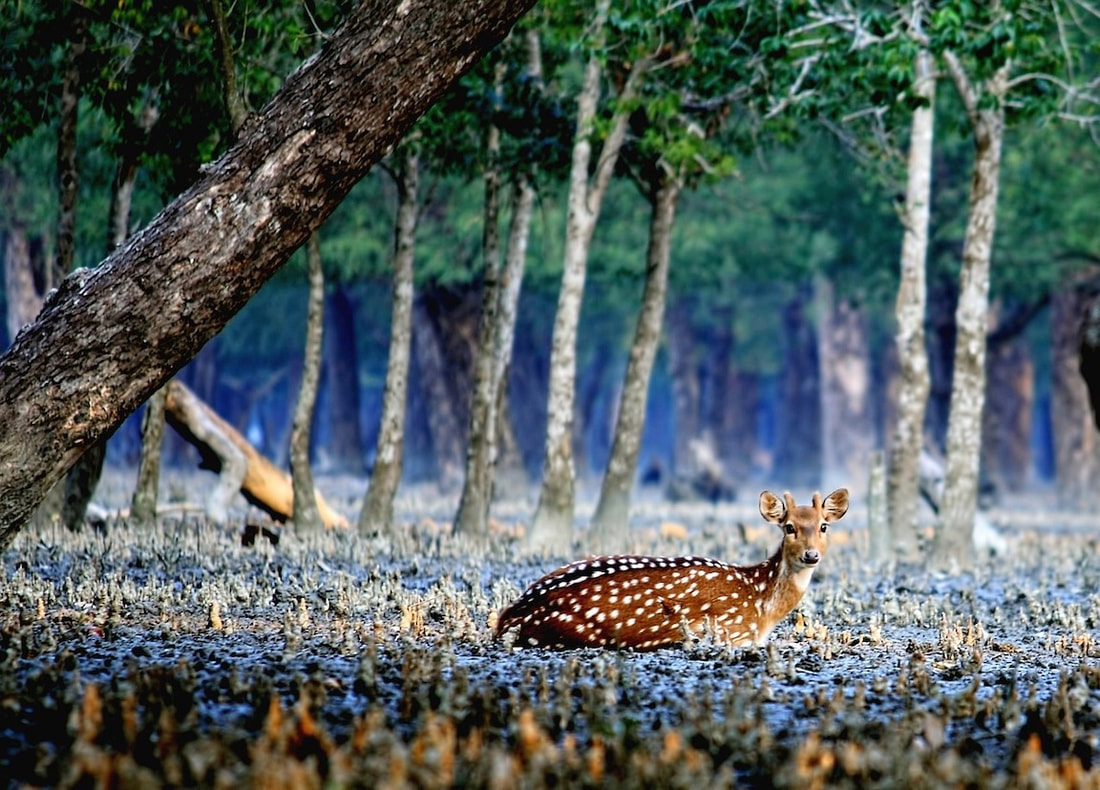Nestled between India and Bangladesh lies one of the world’s most unique and mysterious ecosystems: the Sundarbans. A UNESCO World Heritage Site and the largest mangrove forest on Earth, the Sundarbans is teeming with rare and endangered wildlife that thrives in its brackish water, muddy terrain, and thick forest cover.
If you’re planning a safari or eco-tour to this magnificent region, Tripncare offers expert-curated experiences designed to help you explore the diverse wildlife in the Sundarbans safely and authentically. From the elusive Royal Bengal Tiger to the curious Irrawaddy Dolphin, this blog will guide you through the top animals you can spot in the Sundarbans National Park and the best ways to encounter them.
Whether you’re a wildlife photographer, an eco-traveler, or a curious adventurer, this guide is your ultimate roadmap to the biodiversity of the Sundarbans. In addition, it will help you plan a more rewarding and immersive journey.
Why the Sundarbans is a Biodiversity Hotspot
The Sundarbans is not just another forest. It is an intricate labyrinth of tidal waterways, mudflats, islands, and dense mangrove canopies that support a unique ecosystem. The delta is formed by the confluence of three major rivers: the Ganges, Brahmaputra, and Meghna, creating an ideal habitat for hundreds of animal species.
Key features of Sundarbans biodiversity include:
- Over 400 species of wildlife inhabit the area
- The region hosts critically endangered and endemic species
- It shelters India’s most famous population of Royal Bengal Tigers
- A delicate but thriving balance of marine, freshwater, and terrestrial life is sustained here
For all these reasons, the Sundarbans remains a globally significant zone for conservation and wildlife research.
Top Wildlife to Spot in the Sundarbans
1. Royal Bengal Tiger
The undisputed ruler of the Sundarbans is the Royal Bengal Tiger. This region is home to the only population of tigers that have adapted to a mangrove ecosystem. Known for their elusive behavior, these tigers are strong swimmers and can traverse tidal creeks in search of prey. They often go undetected due to their stealth and camouflage.
- Estimated population: Around 100 in the Indian Sundarbans
- Best time to spot: Winter months (November to February)
- Special behavior: Known for attacking from water, a rare trait among tigers
Tripncare Tip: Join a sunrise or early morning safari by boat for a higher chance of sightings. The quiet atmosphere during early hours enhances your experience.
2. Saltwater Crocodile

The Saltwater Crocodile is the world’s largest living reptile, and a formidable presence in the Sundarbans. These apex predators can often be seen basking on the mudbanks or gliding through tidal rivers. Their size and stealth make them fascinating yet intimidating.
- Can grow up to 6–7 meters in length
- Feeds on fish, birds, and sometimes mammals
- Known for aggressive territorial behavior
Visitors frequently spot them around the Sajnekhali and Dobanki areas. This is where water bodies remain calm and ideal for observation.
3. Irrawaddy Dolphin
A lesser-known but fascinating inhabitant of the Sundarbans is the Irrawaddy Dolphin, distinguished by its rounded head and short beak. These mammals are often spotted in groups and are highly endangered. Spotting them is considered a highlight by many travelers.
- Lives in brackish water close to river mouths
- Non-acrobatic, shy, but intelligent
- Often seen near the confluence of Matla and Bidya rivers
They typically emerge for brief moments, so keep your eyes peeled and your camera ready.
PEOPLE ALSO LIKE TO READ THIS: Trekking Hidden Gems In Uttarakhand| Discover the easy Trails
4. Spotted Deer (Chital)
The Chital or Spotted Deer is one of the most commonly seen herbivores in the Sundarbans. They are a key prey species for predators like the tiger and are known for their alert behavior.
- Travel in herds to stay safe from predators
- Highly photogenic and easily spotted in clearings
- Serve as ecological indicators of a healthy forest
Because of their abundance and frequent vocal calls, they often alert others about nearby predators.
5. Fishing Cat
This small wildcat is uniquely adapted to the wetlands. Unlike most cats, it loves water and is an excellent swimmer. It has evolved to thrive in the mangrove ecosystem.
- Primarily active at night
- Preys on fish, birds, frogs
- Rarely seen, but look for it near shallow tidal pools
Due to its nocturnal nature, chances of seeing it increase during night boat rides.
6. Estuarine Monitor Lizard

These giant lizards can grow over 2 meters in length and are often seen sunbathing along muddy banks. Their presence is crucial for scavenging and balancing the ecosystem.
- Omnivorous scavengers with a varied diet
- Important for balancing the ecosystem
- Non-aggressive but should be observed from a distance
While not dangerous, they can appear suddenly, so always stay alert.
7. Mangrove Horseshoe Crab
Often described as a living fossil, this arthropod dates back 450 million years. It plays a crucial role in the mangrove food chain and has unique evolutionary traits.
- Appears during low tide on sandy shores
- Harmless to humans
- Indicator of healthy mangrove systems
Spotting one is a treat for nature lovers and biology enthusiasts alike.
8. King Cobra
One of the most dangerous snakes in the world, the King Cobra is both feared and revered. Spotting one is rare, but their presence adds an element of excitement.
- Feeds primarily on other snakes
- Avoids human interaction
- Often found in undisturbed mangrove interiors
Though dangerous, King Cobras usually avoid confrontation. Guides advise maintaining distance.
Birdlife in the Sundarbans
Over 270 bird species have been recorded in the Sundarbans. It is a paradise for ornithologists and birdwatchers. The rich variety of both resident and migratory birds makes it an ideal birding destination.
Top birds to spot include:
- Black-Capped Kingfisher
- White-Bellied Sea Eagle
- Mangrove Whistler
- Eurasian Curlew
- Brown-Winged Kingfisher
Winter is the best season for birding as many migratory birds visit the delta. Early mornings provide the most bird activity.
Endangered Species of the Sundarbans
Some species in the Sundarbans are critically endangered or vulnerable due to habitat loss, climate change, and poaching. Conservation efforts are ongoing, yet threats persist.
- River Terrapin: A rare turtle species on the brink of extinction
- Ganges River Dolphin: Facing threats from pollution and boating
- Sundarbans Tiger: Though stable, still under threat from rising sea levels
Travelers should understand and respect these fragile ecosystems to support long-term conservation.
Best Time to Visit the Sundarbans
- October to March: Ideal for safaris, wildlife spotting, and birdwatching
- Avoid monsoon season due to heavy rainfall and restricted access
Tripncare recommends booking your trip during the cooler months for optimal comfort and visibility.
Tips for Wildlife Safaris in the Sundarbans

- Book with eco-certified operators like Tripncare for safe and sustainable travel
- Wear neutral-colored clothing and avoid perfumes
- Carry binoculars and silent DSLR cameras
- Respect animal territory and follow guide instructions
These tips not only enhance your experience but also protect the delicate environment.
How to Reach the Sundarbans
- Nearest City: Kolkata (100 km away)
- Transport: Accessible by road to Godkhali, then boat to various forest islands
- Tripncare offers customized Sundarbans safari packages including transfers, stays, and guided tours
Transportation arrangements are made simple when you book with experts.
Conclusion: Enter the Wild Heart of India with Tripncare
The Sundarbans National Park is more than a destination—it’s a living, breathing ecosystem that demands respect and awe. With over 400 species of wildlife, it offers a rare glimpse into nature at its rawest. Whether it’s the stealthy Royal Bengal Tiger or the shy Irrawaddy Dolphin, the wild here doesn’t just survive—it thrives.
Plan your next nature escape with Tripncare, your trusted travel partner for wildlife safaris in India. Experience the magic, mystery, and majesty of the animals of the Sundarbans with expert-guided adventures. You will leave with memories that last a lifetime.









